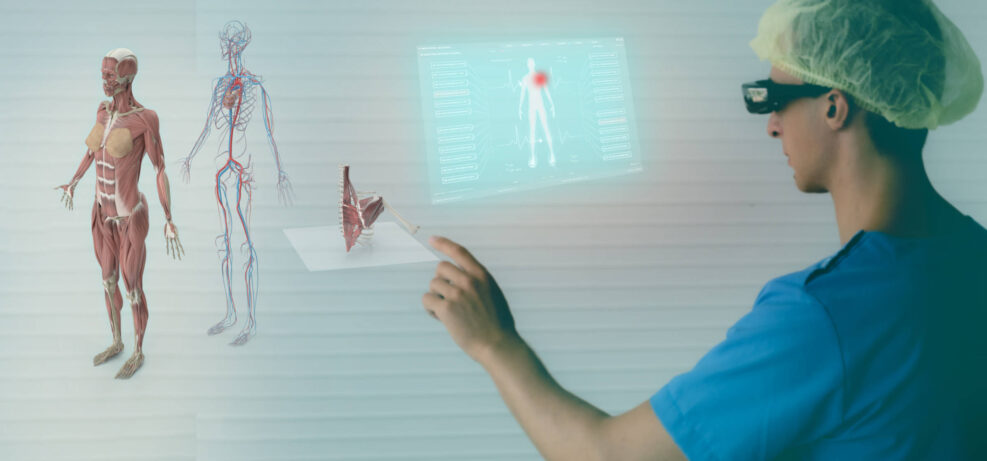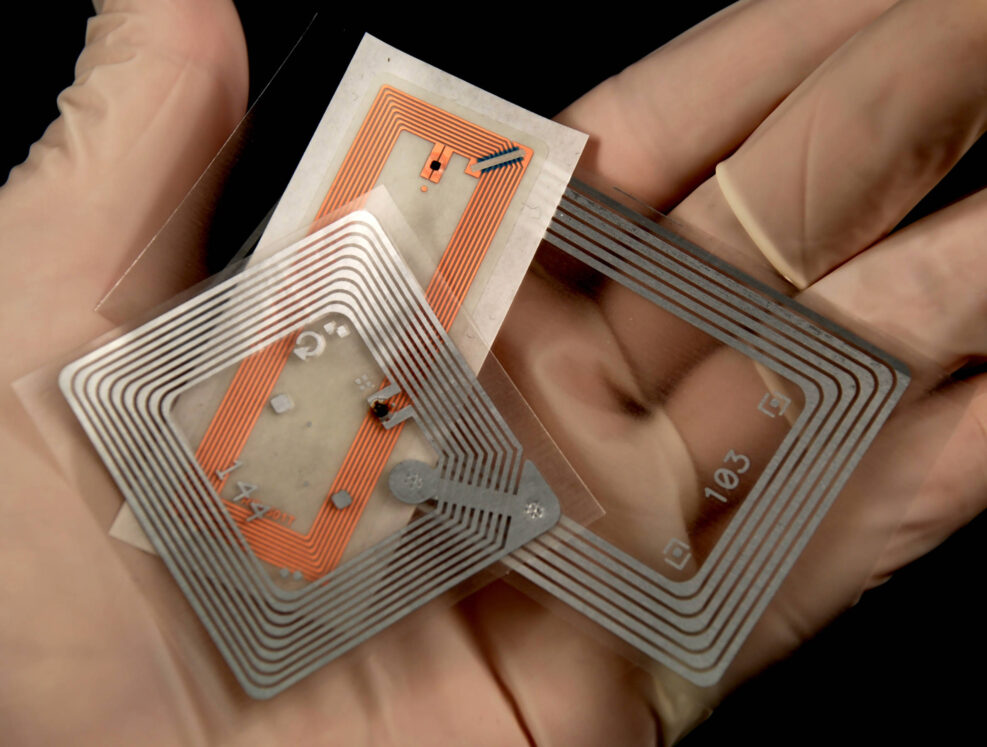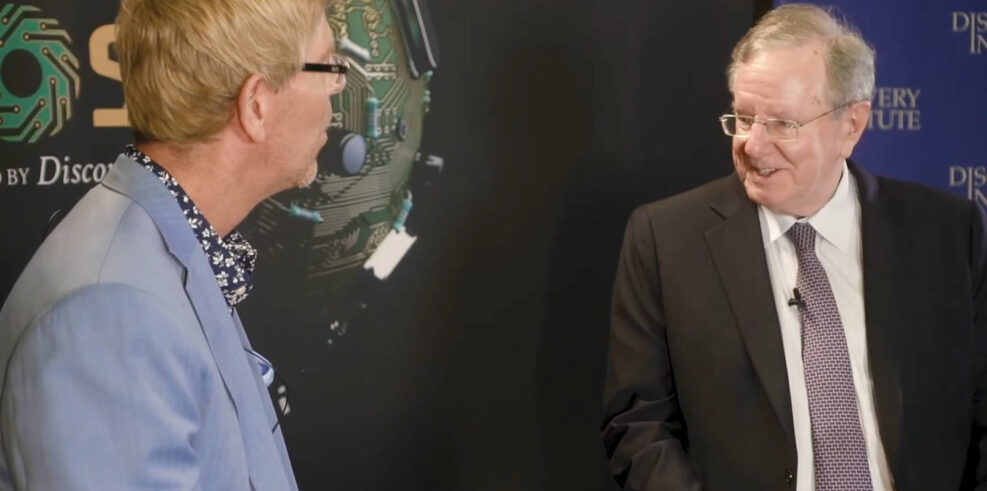
Monthly Archive June 2020


Why is Bell’s Theorem Important for Conservation of Information?
Proving a negative is difficult. Demonstrating that there are no leafy green crows is hard to do without examining every crow. But there's another way.Proving a negative is difficult. Think about it. For example, demonstrating that there are no leafy green crows is hard to do without exhaustively examining every crow in existence. On the other hand, proving there are no crows naturally emblazoned with the text of the King James Bible is a bit easier to do. Proving a negative is possible if the extremes are large enough. Such as result is known as a no-go theorem. One of the most profound no-go theorems can be found in quantum physics. Physicist John Bell (1928–1990) proved — entirely from first principles — that there is a fundamental difference between how particles interact classically compared with how they interact within quantum physics. In classical physics, Read More ›

Inflation Is the Least of Our Worries!
Yet some fear that the inflation dragon is about to roarThe Federal Reserve (the Fed) can throw the economy into a recession whenever it feels that it is in our best interests to be unemployed — typically because the Fed is convinced that an unruly inflation needs to be tamed by the discipline of unemployment. For example, in 1979, as the rate of inflation peaked above 13 percent, the Fed moved to make borrowing prohibitively expensive. When Fed Chair Paul Volcker was asked if the Fed’s policies would cause a recession, he replied, “Yes, and the sooner the better.” Interest rates reached 18 percent on home mortgages and were even higher for most other bank loans. Households and businesses cut back on their borrowing and spending and the unemployment rate Read More ›

Newfound Respect in Science Literature for Near-Death Experiences
For example, when people claim that they could see colors not normally available to humans, there is at least a possible science basis for that.One really interesting change in science literature on near death experiences in recent years has been growing respect, possibly due to more information about them. For example, when people claim that they could see colors not normally available to humans, there is at least a possible science basis for that. In a recent edition of Scientific American neuroscientist Christof Koch, chief scientist of the Allen Institute for Brain Science, founded by a Microsoft billionaire, doesn’t discount them. He would like to find a fully naturalist explanation but that is quite different from past efforts to explain them as mere hallucinations, which failed to take into account their life-changing effects. He has said about them, I accept the reality of these Read More ›

What to make of Erica, the AI Superstar Robot?
I have a hard time conceiving of a way that this film could be successful without a little bit of cheating.An AI super star? In case sci-fi fans haven’t heard, there is a new actress on the block. Her name is Erica and she is a… robot. According to the Hollywood Reporter Erica will star in a sci-fi film called b, “b follows a scientist who discovers dangers associated with a program he created to perfect human DNA and helps the artificially intelligent woman he designed (Erica) escape.” A part of me chuckles, thinking of the creepy uncanny valley Youtube videos of failed attempts at human-like robotics. However, robotics doesn’t seem to be the center of attention here. As Hollywood Reporter also reports, b is, “a $70 million science fiction film which producers say will be the first to rely Read More ›

Is the Turing Test Misguided? George Montañez comments
When you think about it, the Turing test is a bit of a scam. Human beings are supposed to guess whether we are talking to computers purely according to answers. But clever answers can be precoded by a clever person. We could be talking to a well-trained magpie. George Montañez of Harvey Mudd College argues that the question of whether machines can think, as posed in Alan Turing’s seminal paper in 1950 , “Computing machines and intelligence,” is too vague to admit of an exact answer. Besides which, it is kind of complicated. https://episodes.castos.com/mindmatters/Mind-Matters-088-George-Montanez.mp3 Transcript. As he told Walter Bradley Center director Robert J. Marks in a recent podcast: George Montañez Yeah. So, there was actually three versions of the Read More ›

How Do Sounds Contain Ideas?
Human language differs from animal and plant communication systems in that it enables the transmission of ideasIt’s not a simple question! Human language differs from animal and plant communication systems in that it enables the transmission of ideas, which are abstractions. Think of the Pythagorean theorem or tripartite government. Many explanations of how human language came to exist seem to be stabbing in the dark. Here are some of the current theories: Could language have arisen from hand gestures? We are told that “Wild chimpanzees, for example, have been seen to use at least 66 different hand signals and movements to communicate with each other. Lifting a foot towards another chimp, for example, means ‘climb on me’, while stroking their mouth can mean ‘give me the object’” (Horizon August 20, 2019). But these aren’t ideas, just Read More ›

A Theoretical Physicist Defends Free Will
Physics, he says, has made huge strides, but has not upset free willGeorge Ellis, considered a world leader in relativity and cosmology (right, courtesy David Monniaux), offers some thoughts: Physics has made huge strides since the days of Laplace; indeed, it would be completely unrecognisable to him. Yet there are still physicists today who confidently proclaim that we can’t have free will because physics determines everything, including brain functioning – entirely ignoring the complex context and the power of constraints. If you seriously believe that fundamental forces leave no space for free will, then it’s impossible for us to genuinely make choices as moral beings. We wouldn’t be accountable in any meaningful way for our reactions to global climate change, child trafficking or viral pandemics. The underlying physics would in reality be Read More ›

Is Crypto Just a Flash in the Pan?
Or, to put it more bluntly, will blockchain ever grow up to be a real financial system? Forbes says yes, cautiously
Virtual Reality Joins Actual Reality — and It’s a Real Advance
The grandfather of virtual reality explains how everyone began to think of ways VR might help themAs a result of media reports of his success in pioneering virtual reality for the US Air Force, many people contacted Thomas Furness. asking about civilian uses for virtual reality. In a recent podcast, Walter Bradley Center director Robert J. Marks continued his discussion with the “grandfather of virtual reality.” And the people who contacted Furness were not asking for better computer games. They were talking about really serious issues: https://episodes.castos.com/mindmatters/Mind-Matters-086-Thomas-Furness.mp3 Transcript. Partial transcript: Thomas Furness: One question that came, one of the first ones I received, was from a mother who had watched a program that, apparently I was talking about the virtual cockpit. She called me and said, I watched this program. I want you to know my Read More ›

Can We Really Cheat Death by Downloading Our Brains?
Through the ages, we have thought of unique ways to avoid death. Could the internet and artificial intelligence help?Last October, Jay Richards, author of The Human Advantage, caught up with Bradley Center director Robert J. Marks, a Baylor University computer engineering prof, at COSM 2019 to ask, what are our cheat-death chances? They were responding to futurist Ray Kurzweil’s heady claims made at the conference that we will merge with computers by 2045 and live on as AI. Richards and Marks reflected on Kurzweil’s claims and the thoughts of the panel responding to them. Here’s a partial transcript: Jay Richards: He’s (Kurzweil, below right) very much a sort of, I’d say, a techno-optimist. And in fact, he sort of thinks we’re going to get brain scans and upload ourselves, whereas the panel… Though I know there was a Read More ›

The Age of the Wolf Warrior: China’s Post-Pandemic Strategy
The younger diplomats take their cue from a Chinese Rambo-style movie and the rewritten history they learned at schoolWhile countries around the world have been dealing with the spread of COVID-19 (coronavirus), China has claimed disputed areas in the South China Sea, taken over the Hong Kong government, and flown planes over Taiwan. One result was a standoff between warships from the U.S., Australia, and China. A 2016 international tribunal in The Hague ruled that China has no legal sovereignty over most of the South China Sea. China, saying that the ruling was void, claims areas that are also claimed by Vietnam, Taiwan, Malaysia, Brunei, the Philippines, and Japan. The Chinese Liberation Army has also increased the number of troops at its border with India (the Line of Actual Control) disputed since the Sino-Indian war in 1962 (below Read More ›

Will AI or Fighter Pilots Win the 2021 Dogfight? Or Both?
The outcome of future warfare will be decided, not by AI alone, but by finding and optimizing the tradeoff between human and artificial intelligenceThe US Air Force began as Billy Mitchell’s prophecy that air power could decide the next war. That happened, of course, when the B-29 superfortress dropped the atomic bomb on Hiroshima. Ever since, the USAF has sought to adapt to the latest and most decisive forms of military technology. But the challenges have drastically changed. Most recently the USAF started USCYBERCOMMAND, due to the fact that a lone hacker can paralyze an entire nation’s infrastructure. The USAF also started the new Space Force, since a well placed orbital burst can take down the world’s satellite grid. Now USAF is delving into the world of autonomous drones, the next logical step from the manned drones (drones operated by a controller on Read More ›

China Aims at Global AI Dominance by 2030
China’s systematic use of AI for social surveillance and control should cause us to think carefully about what that meansA 2017 central government document laid out the country’s plan for global dominance in AI by 2030, asking all “people’s governments of provinces, autonomous regions and municipalities directly under the central government, all State Council ministries, and all directly controlled institutions” to ”please carefully implement.“ (translation) To achieve that timeline, China has employed several operations against the United States including the Confucius Institutes (fronts for Chinese propaganda according to the FBI, 2020), the Thousand Talents Program (spying and intellectual-property theft, Bloomberg, 2019) and cyber theft. While many Confucius Institutes have been exposed by key members of the Senate and many are being terminated domestically as a result, Chinese-driven cyber theft is costing the U.S. economy more than $100 billion per Read More ›

At the Movies: Can AI Restore Blurred Images?
Working with pixels, we can do remarkable things—as long as we are not asking for magicIt’s an exciting scene in crime investigation movies. A critical image, like the one on the left below, is blurred by pixelization. The detective commands the technician, “Sharpen it!” and the technician pushes a key on a computer keyboard. The key activates an algorithm and, magically, the deblurred image on the right appears. That can’t be done in real life. An image cannot be sharpened using only the information in the image itself. This is proven by a mathy theorem called the data processing inequality. 1 The mutual information between an image and a corrupted blurred image cannot be increased by further processing. Period. That’s why the title of a recent news article from Duke University is misleading: “Artificial intelligence Read More ›

Why Information Theory Is Like a Good Run
Information theory can help us understand a wide range of fields besides computersInformation theory is a deep field that is responsible for our modern internet and satellite TV. The field was pioneered by Claude Shannon to measure our ability to communicate meaning. But besides powering the information revolution, information theory is also very widely applicable elsewhere. Once you understand the basic intuition, you can see applications popping up all over the place. To prove the point, I’ll show how we can apply information theory to gain insight in the very low tech world of running. I’ve been running off and on for many years and I’ve noticed that information theory describes a good run. First of all, what is a good run? A good run is when your body feels as if Read More ›

Two More Hidden Gems Among the Sci-Fi Shorts
I spotted both of these gems on Short of the Week and was instantly intriguedBack in the old days, I used to endlessly browse YouTube for short films; hoping I would find a hidden gem. Don’t get me wrong, I have respect for any aspiring filmmaker but short films can be very difficult to pull off. It could certainly be said that each film deserves respect in one way or another. Every now and then, however, I would find something brilliant hidden in the corners of YouTube. Nowadays, though, Short of the Week has pretty much taken the burden of searching off my hands. First up, we have This Time Away (2019): Nigel is an elderly man living as a recluse, haunted by his past and memory of the family he once had, until Read More ›

What You Need to Know About The Tactile Web
It’s a user-directed integration of technology into lifeMany people have heard the term RFID, “radio frequency identifier,” a technology pioneered in the 1980s for creating tracking chips that needn’t be powered to work. This technology has improved quite a bit over the years. The technology area in which RFID originated is called NFC, for “Near-Field Communication.” In themselves, NFC chips are small and unpowered, but they can receive power from nearby devices, thus enabling them to communicate. The amount of work that modern NFC chips can do is amazing. The NXP firm, for instance, manufactures chips that can do full-blown data encryption and signing. These chips are not only powerful, they are also very inexpensive. NFC tags are available as label stickers at prices as low as Read More ›

Cryptocurrency a “High-Tech Cry for Help” Says Steve Forbes of Forbes Media

Is There Hope for People in a Persistent Vegetative State?
Yes! Modern neuroscience is shining a light on their mindsToday, many neuroscientists don’t even call it a persistent vegetative state. The new term is disorders of consciousness. One neuroscientist recounts, In the past 20 years, advances in neuroimaging techniques have allowed us to explore brain functions in these altered states of consciousness. One breakthrough study conducted at our lab, in collaboration with the University of Cambridge in the United Kingdom, involved 54 DoC patients. The researchers asked the patients to perform two mental-imagery tasks while they lay in a brain scanner. In the first, they were asked to imagine playing tennis; in the second, to imagine walking from room to room in their home – mental tasks that are associated with contrasting patterns of neural activity. Remarkably, five patients Read More ›